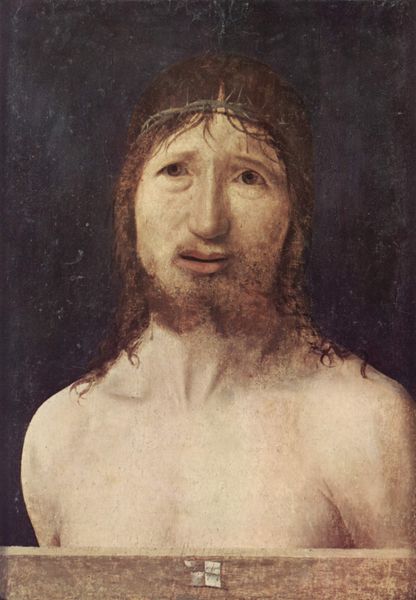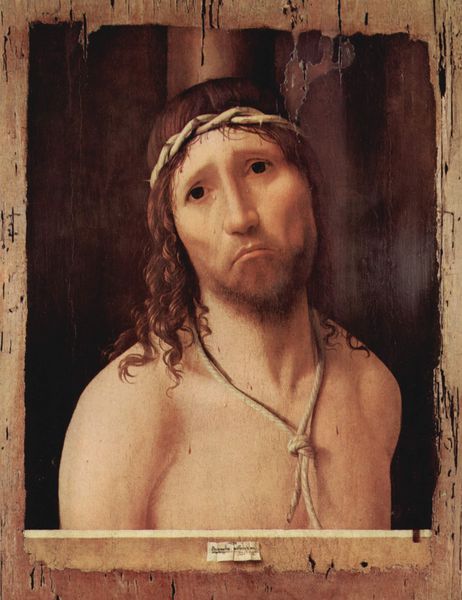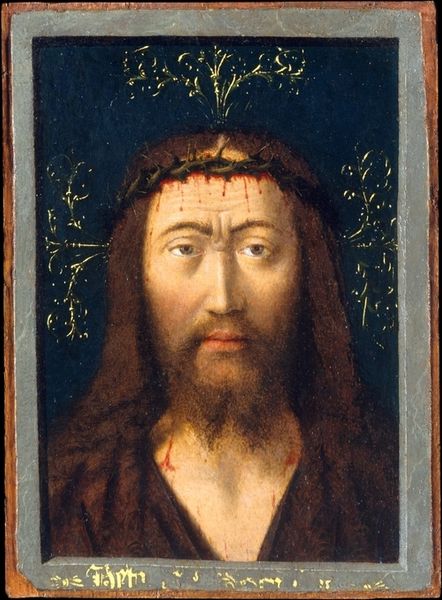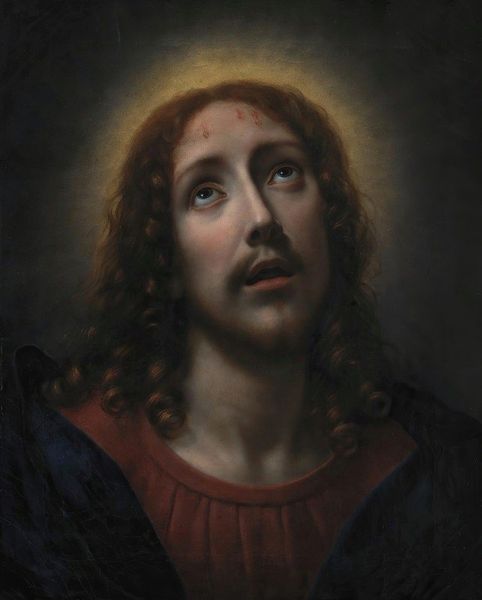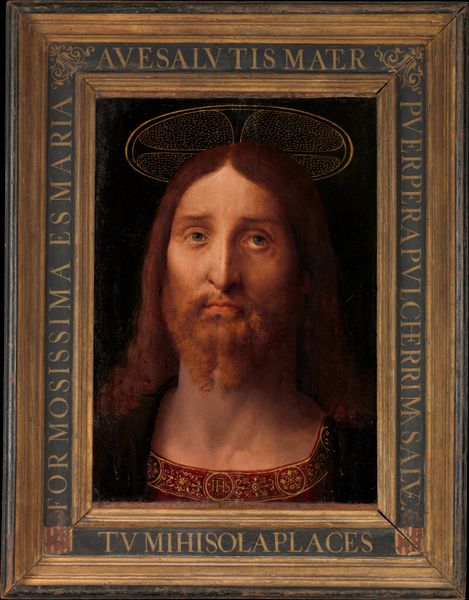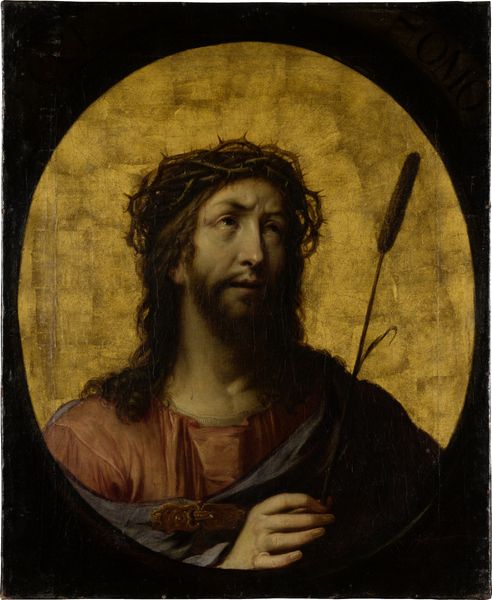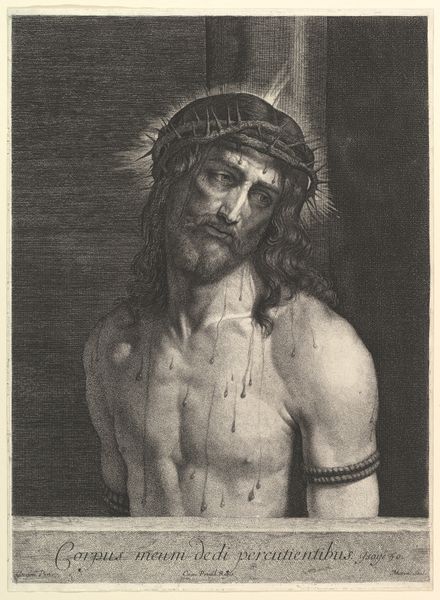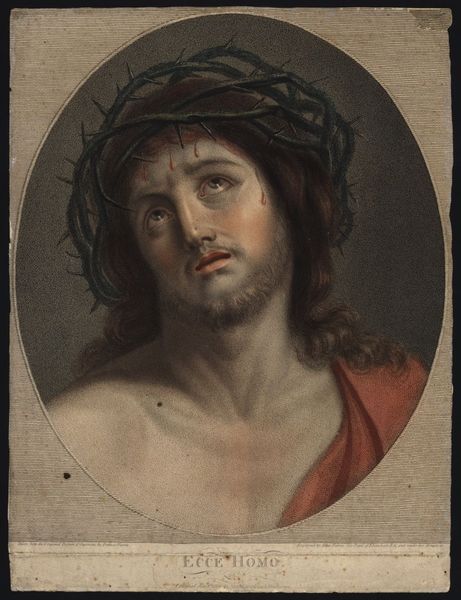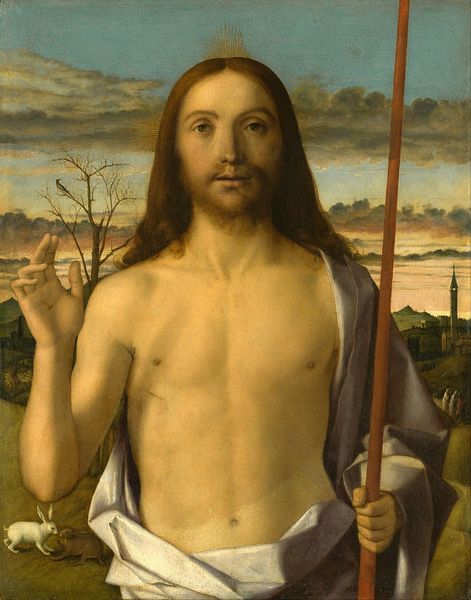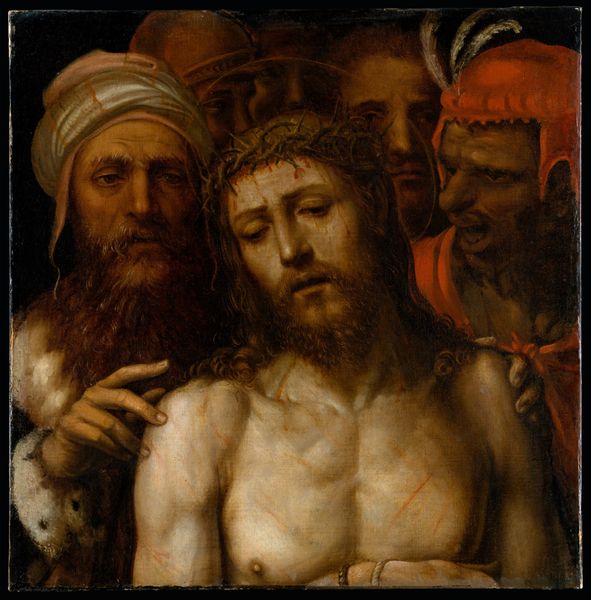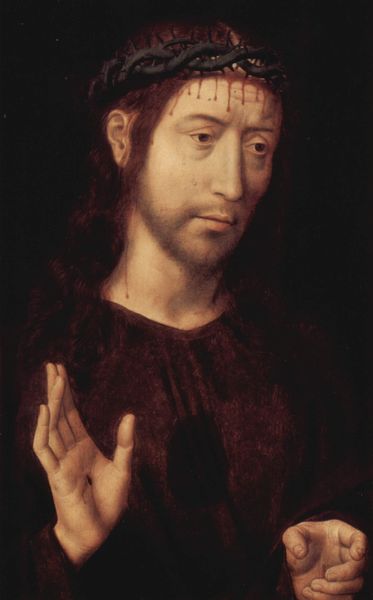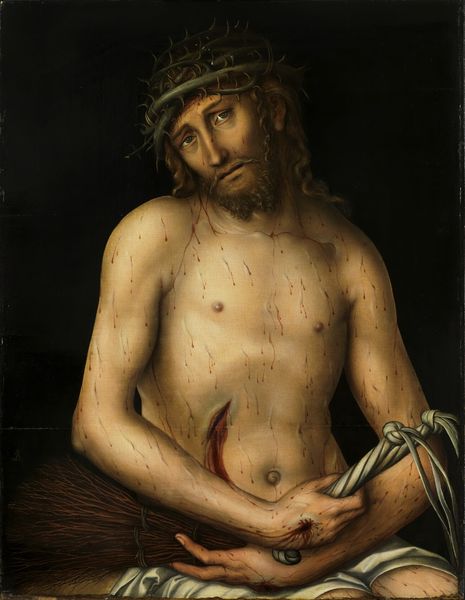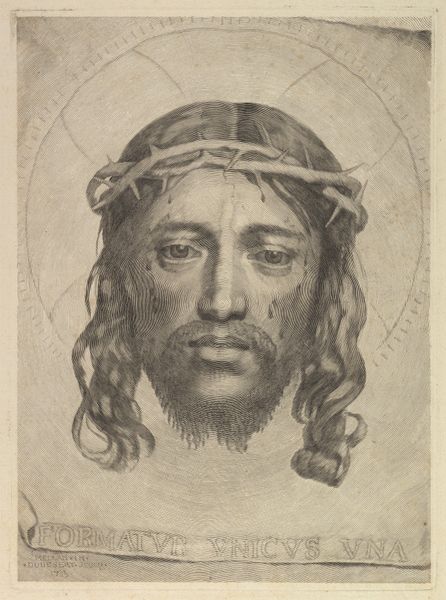
painting, oil-paint
#
portrait
#
painting
#
oil-paint
#
history-painting
#
italian-renaissance
#
realism
#
christ
Dimensions: 16 3/4 x 12 in. (42.5 x 30.5 cm)
Copyright: Public Domain
Art Historian: What strikes me immediately is the raw vulnerability. It’s not just suffering; it’s exposed humanity staring back at you. Art Historian: Indeed. What we’re looking at is Antonello da Messina's “Christ Crowned with Thorns,” likely painted between 1450 and 1479. A haunting oil painting now residing here at the Metropolitan Museum of Art. What can you tell me about that directness you noted? Art Historian: The gaze holds immense power. He is looking at us, through us almost. And it lacks any triumphant glory. The crown of thorns, the blood—it’s not romanticized. It confronts you. How do you think this reflects the sensibilities of the time? Art Historian: Antonello was working during the early Renaissance in Italy, a period grappling with humanist ideals alongside deeply religious themes. Paintings like these would function in churches and wealthy households alike as devotional aids. They reflect shifts in patronage away from collective church identity towards private individualized religious encounters. What's more, Northern realism's influence on Antonello created art prized for objective observation over idealized form, as visible here. Art Historian: The realism certainly amplifies the painting’s psychological weight. The thorns aren't just symbolic; you feel their presence pressing into the flesh, don’t you think? But also the decision to portray him nearly nude is striking. There is a deliberate and sensitive look to convey something fundamental about pain, submission, and self-sacrifice. Art Historian: Absolutely. It moves beyond didactic illustration, it becomes a carefully constructed emotional landscape. What role, do you believe, this piece had within religious practice and broader devotional visual culture? Art Historian: For centuries such works provided direct conduits to feel, witness, and contemplate an archetype of sacrifice and love. But beyond purely religious understanding, seeing the physical embodiment of sorrow allows us to understand and face our own pain. Art Historian: A powerful observation! Art acts as a mediator between the earthly and the spiritual, using accessible relatable visual rhetoric. Messina masterfully understood what it takes for a portrait to reverberate, and to shape cultural thought. Art Historian: In conclusion, Antonello da Messina’s ability to imbue such quiet power within a painted image makes “Christ Crowned with Thorns” resonate across eras and faiths, I believe. Art Historian: Agreed. It shows us how carefully managed artistic strategies enable artists to transmit sensitive emotions to an empathetic public audience, long after brush meets canvas.
Comments
No comments
Be the first to comment and join the conversation on the ultimate creative platform.
